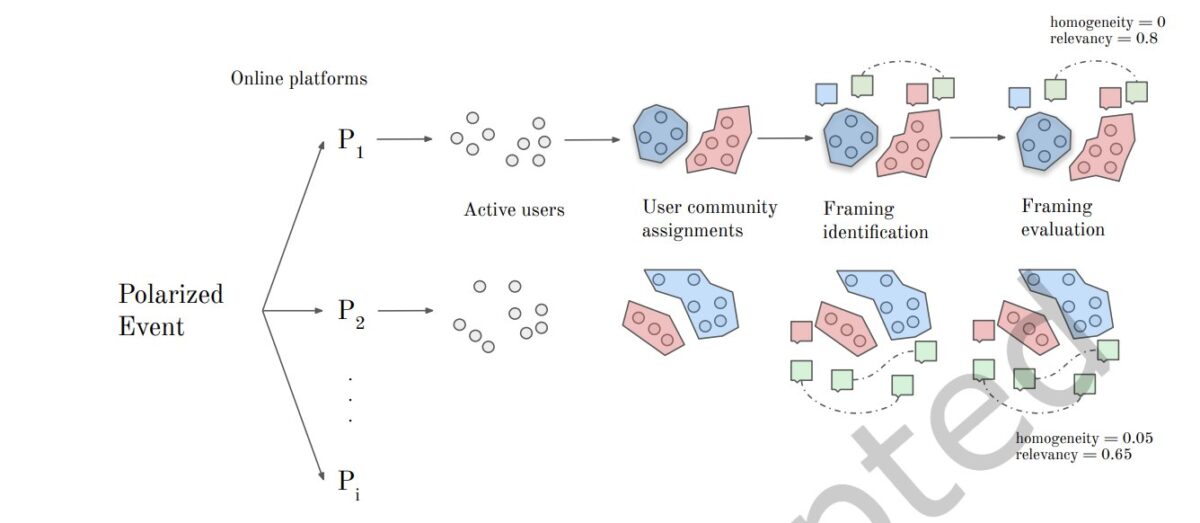Prestigious ACM journal publishes IMFD researchers' study on frame identification in social networks
A recent study entitled "Unsupervised Framing Analysis for Social Media Discourse in Polarizing Events", by IMFD researchers Hernán Sarmiento(IMFD Innovation), Jorge Ortiz (DCC UCH), Felipe Bravo-Márquez(DCC UCH) and Sebastián Valenzuela(PUC), together with Marcelo Santos(UDP) and Ricardo Córdova, was published in the prestigious journal ACM Transactions on the Web (TWEB)of the Association for Computing Machinery. The research examines how frames emerge in polarized online conversations, with a particular focus on social networking platforms. These framescomplex and subtle concepts that shape discussions, play a key role in how users group and communicate about controversial issues.
The study proposes an unsupervised methodology to identify and characterize these frames. framesThe study proposes an unsupervised methodology to identify and characterize these frames, using machine learning, network analysis and natural language processing (NLP) techniques. In order to rigorously evaluate the frames identified, the paper proposes the introduction of new metrics to understand the topics originated in polarizing conversations, named as homogeneity and relevance.
To validate this proposition, a case study on the 2021 Chilean presidential elections is presented, using data extracted from Twitter (X) and WhatsApp.
"This real case allows us to observe how the frames change in response to specific events and the particular characteristics of each platform," explains Hernán Sarmiento, IMFD Innovation Engineer. The study provides new tools and insights into how frames change in response to specific events and the particular characteristics of each platform," explains Hernán Sarmiento, IMFD Innovation Engineer. frames influence online polarization, laying the groundwork for future research on the dynamics of digital communities, especially those involved in highly polarized events.
You can find more details in the link: https://dl.acm.org/doi/10.1145/3711912

Graphical demonstration of the study
